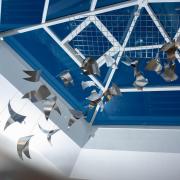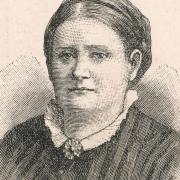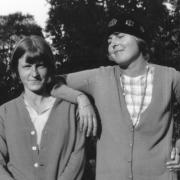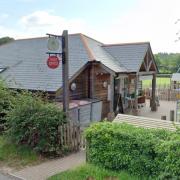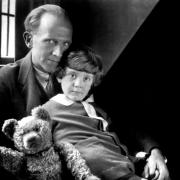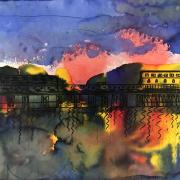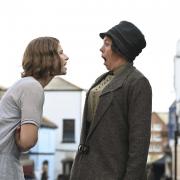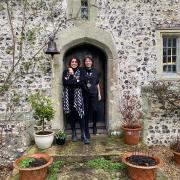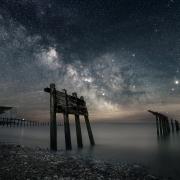Virginia Woolf adored her garden at Monk’s House in Rodmell, East Sussex. It not only inspired her writing, but her writing paid for much of the garden layout too. Indeed, such was her love for the place that her ashes are buried there, beneath an elm tree. In this first of three extracts, we look at the special relationship three famous Sussex writers had with their gardens
Those who make the pilgrimage through the tiny lanes of Rodmell, near Lewes, in search of writer Virginia Woolf find themselves outside a simple, weatherboard cottage with roses clambering over the façade. It is warm and welcoming and seems almost too cosy to be the home of the brilliant, but troubled, writer who took her own life at the age of 59.

Virginia, and her husband, political theorist and author Leonard Woolf, bought Monk’s House in 1919. They had been living nearby, at Asheham House, which Virginia had rented as a weekend escape from town. They went to auction and bid £700 for the house and its garden, which stands next to the village church. At first, Virginia was not impressed by the house, but she fell in love with the wildness of the garden.
When Virginia and Leonard arrived, the garden was ¾ of an acre, to the back and side of the house, with fruit trees and a vegetable patch. They were always meticulous about recording who paid for what, and, because Virginia had recently published her novel The Voyage Out, she paid for the Italian Garden – one of the first areas to be laid out at Monk’s House.
Both Virginia and Leonard loved the garden equally. However, although her diaries record helping with the weeding and seed sowing, it was progressively Leonard who did most of the planning, pruning, planting and building of terraces and ponds.

In The Orchard
In 1926, they took on a full-time gardener, Percy Bartholomew, who would stay until 1945. Percy had to tend a large vegetable garden, which grew produce for the house, and the surplus was given away to villagers or sold at Lewes market. There were five bee hives for honey, an extensive collection of soft fruit – strawberries, raspberries and currants – and an orchard of apples, pears, quince and medlars. This was the place Virginia loved best of all.
Her short story In the Orchard is about a girl reading in an apple orchard very much like the one at Monk’s House. Leonard helped Percy to prune the fruit trees and to collect the honey. In autumn, he would collect the windfall apples and take a basket to the village school just over the wall.
Leonard liked the garden to be wild, with everything fighting for space, but his taste was for bold colours – kniphofias and dahlias – rather than pastel pinks. He became a plantsman through interest and study, and planted a large Trachycarpus fortune near the house, and interesting shrubs including laburnum, magnolia, campsis, chimonanthus and three Ginkgo biloba (though only two remain).
Virginia disapproved of Leonard spending large sums of money on the garden – and dismissed his three greenhouses as ‘Leonard’s Crystal Palaces’. Leonard was a passionate collector of cacti and tropical plants, and the boilers for the greenhouses had to be continually stoked by the gardener when the Woolfs were away.

The Lodge
At first Virginia worked in an outbuilding above the laundry, but by 1921 she was telling her sister, the artist Vanessa Bell, who lived at nearby Charleston, about the new Garden Room that was being made out of an old tool shed. Some years later, when Virginia and Leonard acquired another stretch of land looking over to Mount Caburn and the South Downs, The Lodge (as the shed was known) was moved up to the Orchard, to make the best of the view.
The cost of constructing its wooden-clad sides and shingle roof was £157, which Virginia thought was well worth it. She wrote and often slept there on warm summer nights.
The Lodge, is away from the main house and offered her a measure of peace [she suffered with her mental health and had symptoms that would arguably now be categorised as bipolar disorder but for which there wasn’t a diagnosis or treatment at the time]; with a view across the South Downs.
On the new land, a level bowling green was made, where weekend visitors would play bowls and croquet. Below, they put in an elliptical pond, built of concrete, to echo the dew ponds found across the Downs.
The Woolfs also named two elm trees on the boundary – one ‘Virginia’ and the other ‘Leonard’ – and asked for their ashes to be sprinkled under them when they died.
Bloomsbury Group Visitors
Very often, the house was full of interesting people, and Virginia generally delighted in their company – her sister Vanessa and husband Clive Bell, along with the children Julian, Quentin and Angelica – as well as favoured friends, and members of the artistic and literary Bloomsbury Group, – such as Lytton Strachey, EM Forster, Duncan Grant, TS Elliot, and author [and her female lover] Vita Sackville-West.
While Leonard threw himself into the practical running of the garden, for Virginia it was a backdrop, a landscape for her thoughts and her writing, including her best-known work Mrs Dalloway 1925), and To The Lighthouse, (1927). She loved to walk through the flower gardens and pick flowers for the house, describing in her diary how the garden blazed, and the roses looked as if they were lit up from within.
On a quiet day, Virginia would write and correct proofs in The Lodge if it was warm enough. Then, in the afternoon, she would walk out on to the Downs and back in time for tea at 4pm, followed by letter writing and keeping up her diary, which she did rigorously – as did Leonard. The ritual of walking across the garden each day to reach her writing hut kept her in close contact with the garden.
After Virginia’s death [by placing stones in her pockets and drowning herself in the River Ouse in Lewes], Leonard continued to live at Monk’s House, adding on the conservatory at the back of the house in the 1950s, when he allowed his greenhouses to be taken down. His companion in later years was the English painter Trekkie Ritchie Parsons, and he built on an extension to The Lodge as a studio for her.

When Leonard died, Trekkie became the custodian of Monk’s House, and in 1980 it was taken on by the National Trust. Some of the original trees are still there, but sadly the elms are no longer standing – the one known as ‘Virginia’ blew down in a gale in 1943, and ‘Leonard’ succumbed to Dutch elm disease in 1985.
Mainly, though, the garden is as Leonard and Virginia intended it – in Virginia’s 22 years there and Leonard’s 50. On a summer’s day, the paths are overhung with plants in that semi-wild state that Virginia loved. The Italian Garden is a cool, green space out of the heat, and the bowling lawn still welcomes those who want to play games, against the backdrop of the South Downs.
A house – or a garden – holds the life stories of all the people who inhabit it. But when Virginia Woolf chose this sleepy corner of Sussex, her story is surely the one that will be retold again, and again.
This extract is taken from The Writer’s Garden: How Gardens Inspired the World’s Great Authors by Jackie Bennett (Frances Lincoln, £30).





